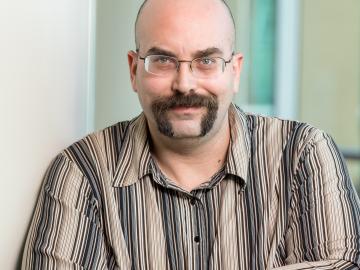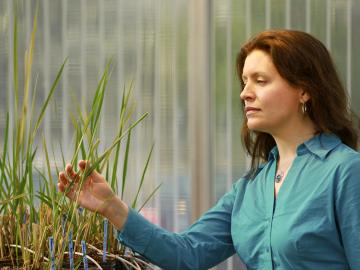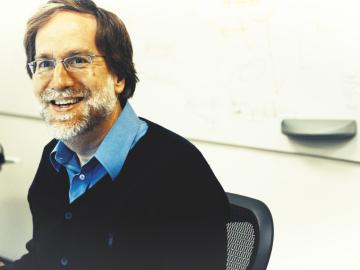
Filter News
Area of Research
- (-) Biology and Environment (60)
- Advanced Manufacturing (6)
- Biological Systems (6)
- Biology and Soft Matter (1)
- Building Technologies (5)
- Chemical and Engineering Materials (2)
- Chemistry and Physics at Interfaces (6)
- Clean Energy (152)
- Climate and Environmental Systems (2)
- Computational Biology (1)
- Computational Chemistry (1)
- Computational Engineering (1)
- Computer Science (2)
- Electricity and Smart Grid (1)
- Energy Frontier Research Centers (8)
- Energy Sciences (1)
- Fossil Energy (1)
- Fuel Cycle Science and Technology (2)
- Functional Materials for Energy (6)
- Fusion and Fission (19)
- Fusion Energy (5)
- Geographic Information Science and Technology (2)
- Isotope Development and Production (2)
- Isotopes (15)
- Materials (167)
- Materials Characterization (2)
- Materials Synthesis from Atoms to Systems (5)
- Materials Under Extremes (7)
- National Security (28)
- Neutron Data Analysis and Visualization (2)
- Neutron Science (68)
- Nuclear Science and Technology (22)
- Nuclear Systems Modeling, Simulation and Validation (1)
- Quantum Condensed Matter (2)
- Reactor Technology (1)
- Sensors and Controls (2)
- Supercomputing (116)
- Transportation Systems (2)
News Topics
- 3-D Printing/Advanced Manufacturing (4)
- Artificial Intelligence (3)
- Big Data (5)
- Bioenergy (18)
- Biology (24)
- Biomedical (3)
- Biotechnology (5)
- Buildings (1)
- Chemical Sciences (2)
- Clean Water (3)
- Climate Change (16)
- Composites (2)
- Computer Science (7)
- Coronavirus (4)
- Decarbonization (10)
- Energy Storage (1)
- Environment (33)
- Exascale Computing (2)
- Frontier (2)
- Grid (1)
- High-Performance Computing (10)
- Hydropower (3)
- Isotopes (1)
- Machine Learning (3)
- Materials (3)
- Materials Science (2)
- Mathematics (2)
- Mercury (2)
- Microscopy (3)
- Nanotechnology (1)
- National Security (2)
- Net Zero (1)
- Partnerships (2)
- Physics (1)
- Renewable Energy (1)
- Simulation (13)
- Summit (2)
- Sustainable Energy (10)
- Transportation (1)
Media Contacts

Hydrologist Jesús “Chucho” Gomez-Velez is in the right place at the right time with the right tools and colleagues to explain how the smallest processes within river corridors can have a tremendous impact on large-scale ecosystems.

A quest to understand how Sphagnum mosses facilitate the storage of vast amounts of carbon in peatlands led scientists to a surprising discovery: the plants have sex-based differences that appear to impact the carbon-storing process.

Three scientists from the Department of Energy’s Oak Ridge National Laboratory have been elected fellows of the American Association for the Advancement of Science, or AAAS.

As part of a multi-institutional research project, scientists at ORNL leveraged their computational systems biology expertise and the largest, most diverse set of health data to date to explore the genetic basis of varicose veins.

A team of scientists led by ORNL discovered the gene in agave that governs when the plant goes dormant and used it to create poplar trees that nearly doubled in size, increasing biomass yield for biofuels production

Erica Prates has found a way to help speed the pursuit of healthier ecosystems by linking the function of the smallest molecules to their effects on large-scale processes, leveraging a combination of science, math and computing.

Scientists at the Department of Energy’s Oak Ridge National Laboratory have created a recipe for a renewable 3D printing feedstock that could spur a profitable new use for an intractable biorefinery byproduct: lignin.

Attracted to biology, math, and physics as a young student, Omar Demerdash decided that when the time came to narrow his academic interests he wouldn’t pick and choose: he’d pursue them all. Today he’s using his expertise in computational biophysics to model and analyze how molecules interact with p...

Esther Parish’s holistic approach to life is apparent not only in her environmental research at Oak Ridge National Laboratory, but in her careful cultivation of a future crop of young scientists. Her expertise as a geographer coupled with a keen interest in the natural world drives Parish’s resea...

Dan Jacobson is illuminating the workings of biological systems from the molecular scale up by leveraging Oak Ridge National Laboratory’s supercomputing resources to create machine- and deep-learning techniques more easily understood by humans


